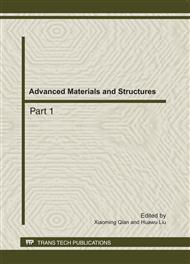p.695
p.699
p.704
p.708
p.713
p.717
p.721
p.728
p.732
Effect of Si3N4-Y2O3 Compound Additive on Crystallization and Sintering of Fused Quartz Ceramic Materials
Abstract:
Fused quartz granules (d50=19 μm) were used as raw material, and Si3N4-Y2O3 (1:1, in mass) was used as additive with dosages of 1%, 2% and 3% (in mass). Fused quartz ceramic materials were fabricated in reduction atmosphere at 1300 °C, 1350 °C and 1400 °C for 1 h. The effect of Si3N4-Y2O3 on crystallization and sintering of the fused quartz ceramic materials were researched by measurements of apparent porosity, bending strength and thermal expansion rate (RT~1200 °C), and by the analyses of XRD and SEM. The results showed that the samples sintered at each temperature with 3% Si3N4-Y2O3 had the lowest apparent porosity, the highest bending strength and more compact microstructure. This indicated that 3% Si3N4-Y2O3 was conducive to sintering of fused quartz ceramic materials. The results of XRD and thermal expansion rate showed that addition of 3% Si3N4-Y2O3 compound had obvious effect on inhibiting crystallization of the samples sintered at various temperatures. It can be deduced that the Si3N4-Y2O3 compound plays the best role in inhibiting crystallization and facilitating sintering of fused quartz ceramic materials.
Info:
Periodical:
Pages:
713-716
Citation:
Online since:
September 2011
Authors:
Keywords:
Price:
Сopyright:
© 2011 Trans Tech Publications Ltd. All Rights Reserved
Share:
Citation:


